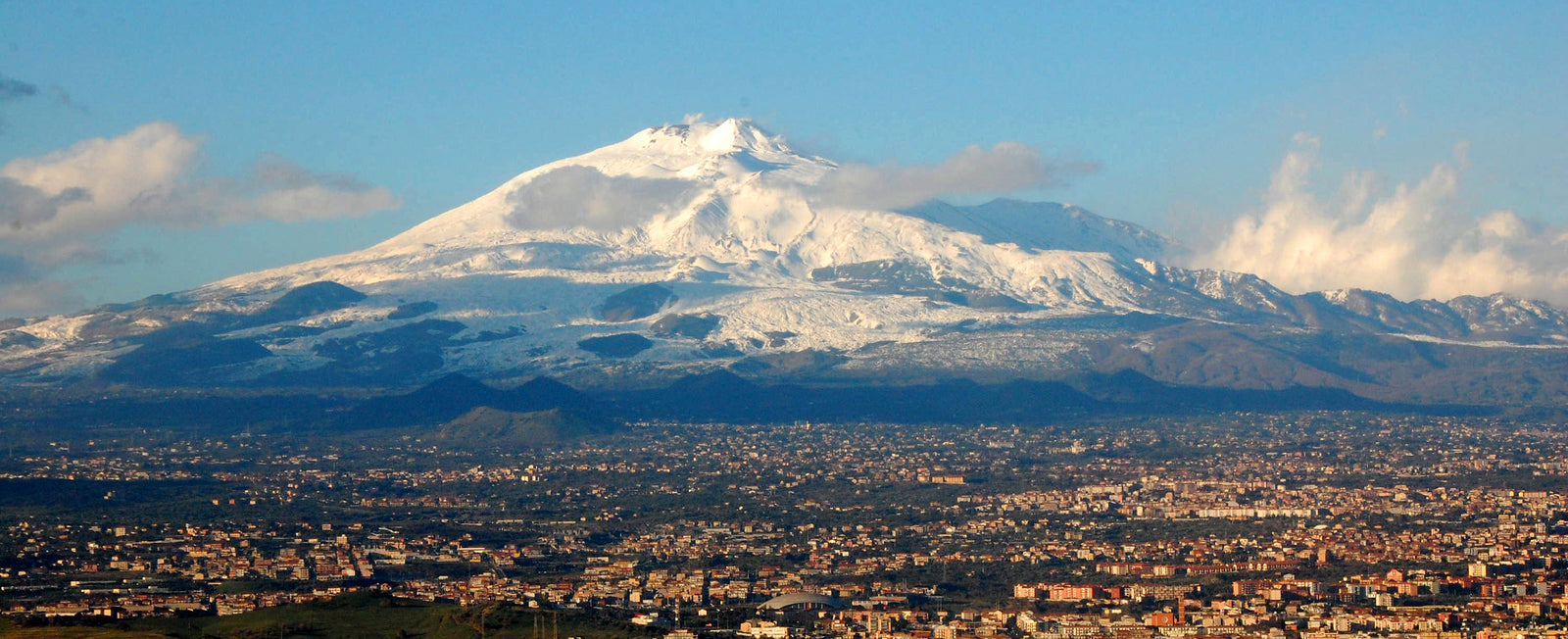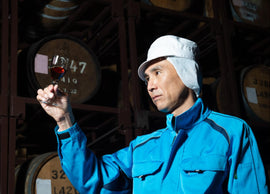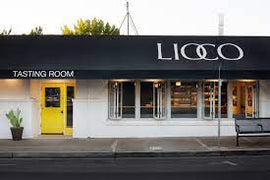Sicily is one of the biggest international wine success stories of the past quarter-century, and small wonder. The largest island in the Mediterranean, it boasts approximately 135,000 hectares of vineyards – more than in all of Bordeaux -- a winemaking history some 2500 years old, and an alphabet (from Acitana to Zibibbo) of native varietals thriving in near ideal viticultural conditions.
Looming above it all is Mt. Etna, the world’s most active strato, or composite, volcano (meaning among other things, that pressure can build and spit smoke and fire at any point on its surface, not just from the summit craters), and arguably the beating heart of this viticultural revival. Vineyards have existed on its slopes as far back as the 6th century BC when the Greeks first colonized the island; ancient writers and poets composed odes to its wines, and it’s easy to see why. A snow-crowned inferno within site of the Mediterranean, Etna is a breathtaking alloy of extremes, an IRL song of fire and ice, where some of the highest vineyards in the world sit atop diverse soils of hardened lava, ash and sand, the legacy of 500,000 years of literal volcanic churn.
From a distance, you can’t not gawk at all that majesty, but in person, the place is apparently kind of eerie. Andrea Franchetti, one of our winemakers this month, describes a “gloomy” landscape of diffused sunlight that “seems to emanate from the objects on the ground”, transmitting particles of lava powder that settle on the skin and serve as a constant reminder that, “on Etna you can lose it all”, and quick. Each eruption at once devastates the landscape and re-shuffles the micro-terriors (called contrade) that make the local juice so distinctive. As Andrea memorably puts it: “There isn’t Mother Nature here. You are conducting your viticulture on stuff that comes out of the terrible below.” The name itself comes from the Greek Aitne, from aithō - “I burn”; Greek mythology holds Etna as the tomb of serpentine hell monster Typhon, buried there by Zeus following an epic battle for control of the cosmos.
So – Happy Halloween! For October we’ve got two devilishly delectable emanations from this elemental accelerant. The red is wrested from Nerello Mascalese, the mountain’s most planted varietal, an ancient grape found almost nowhere else. It’s been likened to the progeny of Nebbiolo and Pinot Noir, blending the tannic structure of the former with the red fruit character of the latter. Our example comes from the oldest winery in Etna, dating back to the early 18th century; the cellar in which it was made pre-dates the unified Italian state.
The white, on the other hand, is made from the highest altitude Chardonnay vines in the world, in Contrada Guardiola, an ancient site 800-1000 meters above sea level at the edge of a lava flow from a 1947 eruption. Andrea Franchetti planted the grapes in 2007 on the (correct) hunch that the combination of this most terroir-sensitive of white varietals with this sui generis soil could in time yield extraordinary results.
|
Passopisciaro Blanco 2020 |
|
|
Region: Etna, Sicily, Italy |
About the Winemaker: In 2000 Andrea Franchetti decided to restore an old farm and cellars on the slopes of Mount Etna. The winery sits at about a thousand meters of altitude above the small wine town of Passopisciaro in the district of Castiglione di Sicilia, on the northern slope of the volcano. His first task was to clear and restore long-abandoned terraces of ancient vines on the northern slopes of the mountain, replanting at a density of 12,000 vines per hectare on thin lavic soil. His arrival on Etna helped to initiate the renaissance of viticulture on the mountain and an international discovery of the wines of Etna. At Passopisciaro, he focused on the native grape Nerello Mascalese and its various expressions of terroir and altitudes through a series of crus, as well as the varieties Chardonnay, Petit Verdot, and Cesanese d’Affile. In 2007, He produced his first white Guardiola Bianco, now Passobianco, a 100% Chardonnay planted at 850-1,000 meters above sea level, with a fresh, mineral and aromatic profile reminiscent of the great whites of Burgundy. Sadly, Franchetti passed away early this year after battling cancer. About the Winemaking: Instead of the indigenous Carricante, which grows on the eastern side of the volcano, Passobianco is made of 100% Chardonnay. When Franchetti arrived on Mt. Etna, he planted 4 hectares of the grape on steep terraces between 850 and 1,000 meters / 2,600 and 3,300 feet above sea level in Contrada Guardiola, in very loose, deep, powder-like lava that is rich in minerals. 17 aging months between cement vats and large oak barrels. Tasting Notes: “Notes of reduction immediately delight on the nose of this Sicilian Chardonnay, like little bouncy balls from a machine springing off of vanilla, honeysuckle, toasted nuts, lime and grapefruit. An expansive palate unveils more mixed citrus, both fresh and dried pineapple, green and yellow apple and pear that's just under ripe. Buttered sourdough bread on the back palate is expertly contrasted by a tingly spine of acid to ensure balance." - Wine Enthusiast |
|
Winemaker: Andrea Franchett |
|
|
Price per bottle / per case $42.99/$464.30 |
|
|
Suggested Food Pairing: roasted squash, onion flan, crisp-skinned chicken, aged cheeses. Pistachio Pesto Pasta (see recipe) |
|
|
Baron di Villagrande Etna Rosso 2019 |
|
|
Region: Etna, Sicily, Italy |
About the Winemaker: Barone di Villagrande is the oldest winery in Etna. They date all the way back to 1727. The cellar, still in use, was built in 1850. Today Marco Nicolosi and his wife Barbara Villagrande run the estate. The winery covers 18 hectares and has been certified organic since 1989. They still harvest everything by hand as it has been for generations. The winery is located on the East side of Etna in Milo which is the only place in Etna in which you can receive the Bianco DOC Superiore certification. The east gets almost 2000 millimeters of rain per year (the most in Sicily). The winds coming off the Ionian sea help dry the grapes out after the rainfall.
About the Winemaking: Hand harvested and certified organic since 1989. The Cru red is first macerated in stainless steel under controlled temperature for 6-10 days, and then aged in 500ml chestnut barrels which are made from the chestnut trees in the forest that surround the property of Villagrande, for 12 months. Bottled 24 months after harvest. Nerello Mascalese 80%, Nerello Cappuccio and Nerello Mantellato 20%
Tasting Notes: On the nose then on the palate, the immediate perception of wild berries followed by light herbal sensations. Tannic but not aggressive, well balanced by a clear and marked acidity. |
|
Winemaker: Marco Nicolosi |
|
|
Price per bottle / per case: $27.99/$302.3 |
|
|
Suggested Food Pairing: tuna steak, bluefish, salmon, pappardelle with short rib ragu, tajin chicken, sweet soppressata, eggplant caponata |
|
¼ cup (40g) pistachios, toasted and lightly salted (+ extra for serving) (you can use toasted and salted pistachois or toast raw pistachios on non-stick pan with no oil for a few minutes, shaking frequently to avoid burning.)
1 garlic clove, minced
2 cups (500 ml) fresh basil, packed (+ extra for serving)
⅓ cup (80 ml) extra-virgin olive oil
¼ cup (25g) parmesan cheese, grated
Salt and freshly ground black pepper
1–2 ball(s) of burrata cheese (or fresh mozzarella for a more economical option.)
- For the pistachio pesto, add pistachio and garlic to a food processor. Pulse a few times, until chopped, scraping down the sides of the bowl as needed. Add the fresh basil and pulse a few more times, until finely chopped. Stream in the olive oil and process until smooth. Open the food processor, remove the blade, and stir in the grated parmesan cheese. Season with salt and pepper. Taste and adjust seasoning as needed.
- Cook pasta in a large pot of salted boiling water according to the package directions. Before draining the pasta, reserve some of the starchy pasta water. Drain the pasta and return to the pot, off the heat.
- Add ¼ cup (60 ml) of the pasta water back into the pot with the pesto, and stir to thin the pesto. Toss in the cooked pasta, and mix until the pistachio pesto thoroughly coats it. Serve with torn burrata here and there, add extra toasted pistachios and fresh basil leaves. Enjoy!





